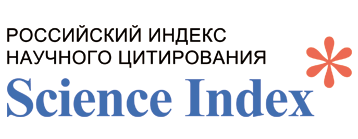DEVELOPMENT OF ALTERNATIVE WAYS OF OBTAINING BIOMASS OF ARTHROSPIRA PLATENSIS SUITABLE FOR LARGE-SCALE PRODUCTION
Keywords:
microalgae, biomass, Arthrospira platensis, nutrient medium, cultivation, amassing, yieldAbstract
Comparative data on the determination of quantitative indicators for the process accumulation biomass of Arthrospira platensis depending on the nature of the used nutrient medium is considered. It is shown that using the alternative resources such as carbonat the source of the main nutrient element in the nutrient medium (raw natural soda and raw soda by absorbed flue gas CO2) and geothermal hydrocarbonate water lead to increase on yield and decrease the cost of biomass produced, and at the same time to decrease greenhouse gas concentrations of CO2 in the atmosphere. It is noted, that obtaining biomass at lower production costs is associated by decrease in the cost of mineral salts in the nutrient medium (about 23%), which makes the proposed method favorable for obtaining biomass on enlarge scale.
References
[1] Fakruddin M.D. Biosurfactant: Production and Application // J. Pet. Environ Biotechnol. 2012. Vol. 3. P. 124-128. doi:10.4172/2157-7463.1000124
[2] Santos D.Kh.F., Rufino R.D., Luna J.M., Santos V.A., Sarubbo L.A. Review Biosurfactants: Multifunctional Biomolecules of the 21st Century // Int. J. Mol. Sci. 2016. Vol. 17(3). P. 401405. doi:10.3390/ijms17030401
[3] Paniagua-Michel J.J., Olmos-Soto J., Morales-Guerrero E.R. Algal and microbial exopolysaccharides: new insights as biosurfactants and bioemulsifiers // Adv. Food Nutr. Res. 2014. Vol. 73. P. 221-257. doi: 10.1016/B978-0-12-800268-1.00011-1
[4] Radmann E.M., DeMorais E.G., DeOliveira C.F., Kellen Z., Costa J.A.V. Microalgae cultivation for biosurfactant production // African J. Microbiol. Res. 2015. Vol. 9, N 47. P. 2283-2289.
[5] Chi Z, O'Fallon J.V., Chen S. Bicarbonate produced from carbon capture for algae culture // Trends Biotechnol. 2011. Vol. 29(11). P. 537-541. doi: 10.1016/j.tibtech.2011.06.006
[6] Chi Z., Xie Y., Elloy F., Zheng Y., Hu Y., Chen S. Bicarbonate-based Integrated Carbon Capture and Algae Production System with alkalihalophilic cyanobacterium // Bioresour Technol. 2013. Vol. 133(4). P. 513-521. doi: 10.1016/j.biortech.2013.01.150
[7] Könst P., Mireles I.H., Stel R., Os P., Goetheer E. Integrated system for capturing CO2 as feedstock for algae production // Energy Procedia. 2017. Vol. 114. P. 7126-7132
(http://creativecommons.org/licenses/by-nc-nd/4.0/).
[8] Solovchenko A.E., Lukyanov A.A., Vasilyev S.G., Savanina Ya.V., Solovchenko O.V., Labokova E.S. Possibilities of microalgae bioconversion of agricultural waster // Vest. Mosk. univer. Biology series. 2013. N 4. P. 38-48.
[9] Kainarbayeva Zh.N., Kartay A.M., Sarieva R.B., Dоnenov B.K., Umerzakova M.B. Potential of production of biodegradable surfactants from spirulina biomass in Kazakhstan conditions // Chemical journal of Kazakhstan. 2018. N 3. P. 133-144. ISSN 1813-1107 3 2019
[10] Zeng X., Danquah M. K., Zhang Sh., Zhang X., Wu M., Chen X. D., Ng I.-S., Jing K.,
Lu Y. Autotrophic Cultivation of Spirulina platensis for CO2fixation and phycocyanin production // Chem. Engin. J. 2012. Vol. 183. Р. 192-197.
[11] Carvalho L.F., DeOliveira M.S., Costa A.V. Evaluation of the Influence of Nitrogen and Phosphorus Nutrients in the Culture and Production of biosurfactants by Microalga Spirulina // J.
Engin. Res. and Appl. 2014. Vol. 4, Is. 6. Р. 90-98.
[12] Gorbunova S.Yu., Zhondareva Yа.D. Using poultry farms wastewater to increase Arthrospira plantentsis (nordst) geitler productivity // VestnikSPbGU. 2015. Ser. 3. Vol. 1. P. 70-77.

















